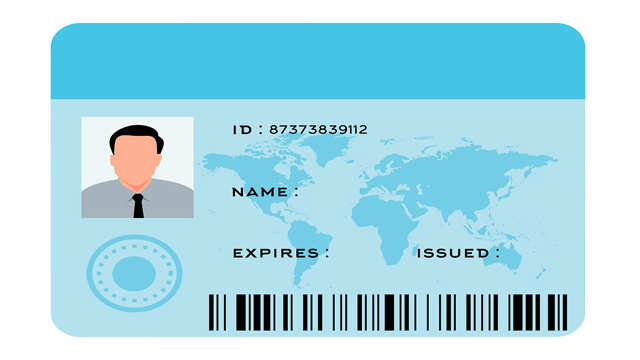Category: Newsletters
Do you want to make Interest-Only Repayments?

If you’re an investor with an interest-only investment loan that is going to revert soon to principal + interest repayments, OR you have a high principal + interest investment loan, then call YML Finance on (02) 8383 4466 and talk to us about our new product.
We have a new product that could potentially help you to go back to making lower interest-only repayments on your investment loan.
Reach out to us NOW and learn more about how we can help you by calling us on (02) 8383 4466 and requesting a callback or making an appointment with the YML Finance Team.
How can YML help?
Talk to our YML Finance Team today to see how YML Group can assist you with investment loan repayment options. For more for more information, view our website and contact us on (02) 8383 4466 or by using our Contact Us page on our website.
YML Chartered Accountants Digital Transformation

To align with the digital world and embrace technological advancements, you will notice some changes in documentation such as tax return and financial statement format, starting from 1st Jul 2023, some of our client's YML service invoices will be sent via Xero, a trusted and secure online accounting software. We want to assure you that this change is entirely legitimate and not a fraudulent activity. You can expect to receive your invoices directly from Xero on our behalf.
If you have any questions or concerns regarding the new way, we send your invoice or any other matter, please feel free to reach out to our team. We value your feedback and are always here to assist you.
How can YML help?
Talk to our YML Chartered Accountants Team today to see how YML Group can assist you. For more information, view our website and contact us on (02) 8383 4400 or by using our Contact Us page on our website.
Superannuation Guarantee Rate – Change from 1 July 2023

Australian employers must make mandatory contributions, paid quarterly, to their employees’ nominated superannuation funds. The contribution is calculated as a percentage of an employee’s ordinary-time earnings and is known as the Superannuation Guarantee (SG).
On 1 July 2023, this percentage rate went up by 0.5%. The Superannuation Guarantee percentage rate – from 1 July 2023 to 30 June 2024 – is now 11%.
Employers are legally obligated to make SG contributions on behalf of their eligible employees. Doing so ensures that employees are not reliant on their own contributions to save and invest for their future retirement. Therefore, employers must keep informed about new compliance matters as percentage rates change each year.
Employer Compliance
The SG contribution scheme requires employers to meet their legal obligations and responsibilities to employees by making accurate and timely contributions within the relevant regulatory framework.
The Australian Taxation Office (ATO) offers a checklist for businesses to help them remain compliant. Here are some points for you to remember:
Update Software: Ensure that your Single Touch Payroll (STP) software is up to date with the recent SG percentage rate change from 10.5% to 11%.
Identify Eligible Employees: Reassess your eligible employees, including any contractors and employees sent overseas on behalf of the business.
Recalculate Ordinary-Time Earnings: Evaluate what earnings qualify as OTE and make any adjustments necessary for the SG calculation in this new financial year.
Check SG Payment Dates: The ATO sets out SG payment dates for each quarter’s required payments by employers to their employees’ nominated superannuation funds. The dates follow the end of each business quarter. This financial year’s contributions are due by:
- 28 October 2023,
- 28 January 2024,
- 28 April 2024, and
- 28 July 2024.
Failure to pay the SG on time can result in penalties imposed by the Australian Taxation Office (ATO). These penalties may include interest charges, administration fees, and even legal action.
Businesses may incur increased tax liabilities for late payment of SG contributions. This is because SG contributions are tax-deductible for Australian businesses, except when an SG contribution is paid late. In the case that an employer does not pay SG contributions on time, the ATO will automatically disallow any tax-deductibility of those SG amounts.
YML Group offers its specialist guidance and advice to help employers to understand the specific implications and benefits of the SG contribution scheme for their businesses and their employees.
How can YML help?
Talk to our YML Business Services Team today to see how YML Group can assist you with your superannuation guarantee obligations. For more for more information, view our website and contact us on (02) 8383 4455 or by using our Contact Us page on our website.
You may access your Superannuation Benefits… When?

Australia’s mandatory retirement savings scheme – superannuation – ensures working Australians have money invested to fund their future retirement. Having worked hard and saved towards your retirement, you want to know when you will be eligible to access your retirement funds. Generally, you may access your superannuation benefits when you meet specific conditions outlined by the Australian Taxation Office (ATO).
Superannuation benefits are subject to rules governing withdrawal, so that your retirement funds are protected until such time as you retire fully and permanently, or you satisfy a ‘condition of release’.
If you satisfy a condition of release, you will have access to unrestricted, non-preserved superannuation benefits from your fund. The amount of unrestricted, non-preserved benefits available to you will vary depending upon the condition of release that you satisfy.
Conditions of Release
In addition to conditions of release under law, it might be that your superannuation fund’s trust deed sets out further rules for payment of benefits. Be sure to check for additional rules in your trust deed.
One condition of release is known as ‘preservation age’.
According to law, your superannuation benefits must be preserved until you reach preservation age. What is yours?
|
BORN |
PRESERVATION AGE |
|
Before 1 July 1960 |
55 |
|
Between 1 July 1960 and 30 June 1961 |
56 |
|
Between 1 July 1961 and 30 June 1962 |
57 |
|
Between 1 July 1962 and 30 June 1963 |
58 |
|
Between 1 July 1963 and 30 June 1964 |
59 |
|
On or After 1 July 1964 |
60 |
Preservation age is a time when you may access your superannuation contributions and any subsequent earnings in the following ways:
Retirement – You have reached your preservation age and permanently retire. You may choose to have your funds released as a lump sum, a regular income stream, or a combination of both.
Transition to Retirement – You have reached your preservation age and choose to keep working. You may access a portion – limited to total payments of between 4% and 10% of your account balance each year – of your retirement benefits as a non-commutable income stream (that is, not as a lump sum) during your transition to permanent retirement.
Attain the age of 65 – You are 65 years old and therefore your superannuation is no longer subject to preservation. You may access it without conditions, including whether you remain employed.
Other ‘conditions of release’ include:
Compassionate grounds and severe financial hardship – In cases where it is deemed essential that early access to a portion of superannuation is given – for example, medical treatment, palliative care, mortgage foreclosure, living expenses – then your application is subject to special criteria, your eligibility is assessed on a case-by-case basis, and government approval is required. Tax may be payable upon release of funds.
Terminal illness – If you are diagnosed with a terminal medical condition, then you may access your superannuation tax-free, regardless of your age.
It is important to note that accessing your superannuation earlier than preservation age may have taxation implications or affect your retirement benefits.
Who else may access your Superannuation Benefits and when?
At your death, your nominated beneficiaries are entitled to receive the balance of your superannuation account.
Beneficiaries who are dependants – your spouse or children under 18 years of age – may receive their entitlement as either a lump sum or an income stream.
Beneficiaries who are not dependents may receive their entitlement as a lump sum.
The release of superannuation benefits requires personalised advice from a professional financial advisor prior to making any decisions about accessing your superannuation and to assess tax implications for beneficiaries.
Consulting with a qualified financial advisor at YML Group will enable you to understand your preservation age and other grounds for release. We can also inform you of any updates to the ATO’s conditions of release, as legislation pertaining to Australia’s superannuation scheme changes.
How can YML help?
Talk to our YML Super Solutions Team today to see how YML Group can assist you with when you may access your superannuation benefits. For more information, view our website and contact us on (02) 8383 4444 or by using our Contact Us page on our website.
Ways to stay afloat when interest rates keep going up

Mortgagees considering options to manage higher repayments on their loans might look at the following strategies to assist them with having financial flexibility and liquidity:
Offset Account: An offset account is a transaction account linked to your home loan. The balance in your account ‘offsets’ against your outstanding loan balance, thus reducing the overall interest you pay. For example, a loan of $500,000 and $50,000 in your offset account means you will only pay interest on $450,000, whilst still having access to your funds.
Redraw Facility: A redraw facility allows you to make additional repayments on your home loan, effectively reducing the principal loan amount. If you need access to those extra funds, you can ‘redraw’ them later. It is important to keep in mind that redraw facilities might charge fees and have limitations on redraw amounts.
Switch to Interest-Only Repayments: Making interest-only repayments on your home loan means you will pay only the interest amount for a specified number of years. You will be paying lower monthly instalments, providing you with short-term financial relief. However, during this interest-only period, you will not be paying off the principal amount and it will therefore not decrease during this time.
Refinance: Refinancing by securing a lower interest rate with another lender can lower your home loan repayments, freeing up more of your monthly budget and making available more disposable income for other expenses. You will also pay less interest over the life of your loan.
Your personal financial circumstances and the specific terms of your home loan offered by your lender are important to consider when choosing which option is best for you.
Reach out to us NOW and learn more about how we can help you by calling us on (02) 8383 4466 and requesting a callback or making an appointment with the YML Finance Team.
How can YML help?
Talk to our YML Finance Team today to see how YML Group can assist you with mortgage relief options. For more for more information, view our website and contact us on (02) 8383 4466 or by using our Contact Us page on our website.
Superannuation Guarantee Contribution: Consequences for Late Payment

Importance of Employers’ SG Obligations
Under the Superannuation Guarantee (Administration) Act 1992, Australian employers are obligated to contribute a certain percentage of their employees’ earnings to a complying superannuation fund, paid quarterly and within specified due dates.
The superannuation guarantee (SG) contribution must be paid to all employees over the age of 18 years, no matter how often an employee works in a month. Any employee under the age of 18 years who works more than 30 hours per week is also entitled to the SG. The SG is a legal entitlement for most employees in Australia and payment by employers is compulsory.
From 1 July 2023 the SG increases by 0.5% to 11% of an employee’s earnings. Setting aside additional remuneration funds will be necessary to meet this new payment obligation.
It is important that employers accurately calculate the SG for each employee and make timely payments to their employees’ nominated superannuation funds.
There are benefits, for both employers and employees, to paying SG contributions on time:
- Regular and timely SG contributions ensure an employee’s retirement funds can grow over time and make the most of compounding interest on their investments. Delaying or neglecting SG contributions could negatively impact an employee’s long-term financial security.
- An employer-employee relationship is enriched by trust and satisfaction when an employer fulfils their obligation of prompt and complete remuneration. However, the relationship could be negatively impacted by late or unpaid SG contributions as a part of an employee’s remuneration.
- Paying the SG on time can help a business maintain its reputation. Public knowledge of SG non-compliance could damage a business’s reputation in its industry and among potential employees, questioning a business’s commitment to the financial wellbeing of its staff. Also, if employees make a complaint, this could lead to financial penalties for an employer.
Consequences for Late Payment of SG Contributions
Failure to pay the SG on time can result in penalties and charges imposed by the Australian Taxation Office (ATO). These penalties may include interest charges, administration fees, and even legal action.
The ATO closely monitors SG compliance and a fine imposed by the ATO is called Superannuation Guarantee Charge, which is composed of outstanding SG contributions (back payments), interest, and an administration fee.
Businesses may incur increased tax liabilities for late payment of SG contributions. This is because SG contributions are tax-deductible for Australian businesses, except when an SG contribution is paid late. In the case that an employer does not pay SG contributions on time, the ATO will automatically disallow any tax-deductibility of those SG amounts.
Once an employer lodges their SG report via Single Touch Payroll (STP), they can check that the report was received successfully at the ATO. The software service provider (SSP) should be able to alert an employer of any reporting errors, however if a SG amount is late, then the next step is for an employer to lodge a Superannuation Guarantee Charge Statement.
Lodging a Superannuation Guarantee Charge Statement
If an employer is late paying their quarterly SG amount, then they must notify the ATO of any late SG payments via the ATO’s process of lodging a Superannuation Guarantee Charge Statement within 28 days of the quarterly due date.
An employer is then liable to pay the Superannuation Guarantee Charge (SGC) which is made up of:
- SG shortfall amounts, plus
- Interest on SG shortfall amounts, plus
- Administration fee of $20 per employee per quarter
If the SGC is not paid, then a general interest charge (GIC) is applied to the full outstanding amount. The GIC accrues and compounds daily, so it would behove an employer to pay the SGC by the due date.
It is crucial to both employers and employees that SG contributions are paid on time and employers should prioritise timely payments with respect for the ATO’s guidelines and deadlines.
How can YML help?
Talk to our YML Business Services Team today to see how YML Group can assist you with your superannuation guarantee obligations. For more information, view our website and contact us on (02) 8383 4455 or by using our Contact Us page on our website.
Australian Taxation Agents require Clients to provide Photo ID

Identity breaches by nefarious people in our widening technological world is cause for the Tax Practitioners Board’s requirement for tax practitioners to verify their clients’ identities with a form of photo identification. This means greater protection for you of your personal and financial information and transactions.
To mitigate devastating financial consequences affecting Australians and the Australian economy, the Tax Practitioner Board asks tax agents to ensure that they adequately authenticate their individual clients’ identities. To achieve this, clients must provide evidence to their tax agent, including a form of identification that contains a photograph.
What you need to provide to your tax agent?
As an Individual seeking to engage a registered tax practitioner in your own right, you are required to provide your Full Name plus either your Residential Address or your Date of Birth. To do this, you will need to show original documentation as evidence:
An original or certified copy of a primary photographic identification document; or BOTH of the following:
An original or certified copy of a primary non-photographic identification document; and
An original or certified copy of a secondary identification document.
| TYPE OF ID | EXAMPLES |
| Primary photographic ID |
|
| Primary non-photographic ID |
|
| Secondary ID |
|
YML Group – Your registered Tax Agent
At YML Group we value our clients and, as directed by the Tax Practitioners Board, we wish to protect both your identity and our practice. Within the month of June, you will receive an email from us requesting the necessary identification documentation to assist us with validating your identity with YML Group.
How can YML help?
Talk to our YML Chartered Accountants Team today to see how YML Group can assist you with your identification process. For more information, view our website and contact us on (02) 8383 4400 or by using our Contact Us page on our website.
Take Advantage: Capital Gains Tax (CGT) Concessions for Small Businesses

Australia’s capital gains tax (CGT) concessions are available for eligible small businesses. There are four concessions designed to provide a financial reward to small business owners by significantly reducing, deferring, or even eliminating a CGT liability when selling an active business asset.
YML Group can help you with your applications for these four CGT concessions:
1. Small Business 15-Year Exemption
If you have owned an active asset for 15 years or more and you are 55 years or older and retiring, you will not pay CGT upon the sale of an active asset. You may also contribute an amount from the sale to your superannuation fund. See Small Business Retirement Exemption.
2. Small Business 50% Active Asset Reduction
If you have owned an active asset (for example, a business property or a piece of business equipment) for at least 12 months, you may be eligible for a 50% reduction in the capital gain from the sale.
3. Small Business Retirement Exemption
If you sell an active business asset and you are under 55 years of age, you may be able to contribute up to $500,000 of the CGT-exempt capital gain to your superannuation fund, without affecting your non-concessional contribution limit. There is a lifetime limit of $500,00 of capital gains contribution to superannuation.
4. Small Business Rollover
This concession enables you to defer paying CGT on the sale of an active asset and use the sale proceeds towards the acquisition of another active asset, between one year prior to the sale and up to two years after the sale. This allows you to defer any CGT liability until the new active asset is sold.
Each of these four CGT concessions has its own requirements and limits, so we suggest you seek professional advice to understand complexities and the specific implications for your business circumstances.
You may apply for as many concessions as you are eligible, in a certain order, until a capital gain is reduced to zero. What are the eligibility criteria? Here, we provide an overview of the general rules of eligibility:
a. Your business must be classified as a small business entity (SBE) for taxation purposes, with an aggregated turnover of $2 million or less in an income year.
b. An asset to be sold must be an ‘active’ asset meaning an asset that is used or held for use while carrying on a business, or an asset associated with a business being transitioned. This is known as the Active Asset Test which must be met.
c. Any disposal of intangible assets such as shares, or trust interests, must meet additional criteria.
d. The Significant Individual Test requires you to be a significant individual in a company or trust with a right or interest in the business, thereby being actively involved in the business of a company or trust immediately before the sale of an active asset.
As we near the end of the financial year 2023, small businesses start looking for ways to reduce tax liabilities. Take advantage of the small business CGT concessions now.
How can YML help?
Talk to our YML Chartered Accountants Team today to see how YML Group can assist you with all CGT concessions. For more information, view our website and contact us on (02) 8383 4400 or by using our Contact Us page on our website.
Do you want a Tax Incentive for your Company to conduct Research and Development?

Australia’s Department of Industry, Science, Energy and Resources incentivises Australian companies to invest in research and development for the betterment of their own business productivity, to drive innovation, to improve communities with employment opportunities and to increase Australia’s international competitiveness.
The Research and Development (R & D) Tax Incentive provides an opportunity to reduce the financial burden of conducting R & D.
Only companies, not individuals, may be eligible to claim the R & D tax incentive, government-offered financial support that offsets R & D expenses.
Who is eligible to apply for the R & D Tax Incentive?
To qualify, a company must meet eligibility criteria:
- Be an Australian incorporated company (under the Corporations Act 2001) or be a foreign company operating a permanent establishment in Australia.
- Be compliant with tax policies and regulations. Companies must be registered with the Australian Taxation Office (ATO).
- Conduct eligible R & D activities. Core and supporting R & D activities are experimental in nature and their outcomes cannot be known or determined in advance, but rather they must be determined through work based on scientific principles to generate new knowledge, processes, devices, products, or services.
|
Note, excluded activities include market research, quality control and testing, and administrative and legal aspects of R & D. |
|
|
The eligibility of R & D activities can be assessed according to the legislation before registering for the programme and commencing any R & D. You might also consider using a Registered Research Service Provider to find a collaborative research partner. |
- Incur eligible R & D expenditure, such as employment costs of R & D staff, costs related to R & D activities, costs of acquiring or constructing assets used in R & D.
- Register with AusIndustry to claim within 10 months of the end of the financial year in which R & D expenditure was incurred.
To meet the legal requirements of the programme, it is essential that complete and accurate records, showing that your company’s R & D activities are eligible, are maintained.
What is the tax offset percentage for my company?
Since 1 July 2021 the tax offset rates under this programme are dependent upon your company’s total annual revenue.
For small-to-medium companies (SMEs) with a total annual turnover of less than $20 million, the refundable offset tax rate is equal to your company’s tax rate plus a premium of 18.5 percent.
For large companies with a total annual turnover of more than $20 million, the refundable offset tax rate is equal to your company’s tax rate plus a premium calculated using incremental intensity (your company’s R & D annual expenditure as a proportion of your company’s total annual expenditure):
- For R & D expenditure up to 2 percent of total annual expenditure, a premium rate of 8.5 percent; and
- For R & D expenditure over 2 percent of total annual expenditure, a premium rate of 16.5 percent.
How to claim the R & D Tax Incentive
Once a company has determined it is eligible for the R & D Tax Incentive, approval to claim must be sought from AusIndustry. Keeping records is important for this stage when an in-depth description of your company’s R & D activities must accompany your application.
Claim applications must be lodged annually for R & D expenses incurred in the corresponding financial year. Lodgement is strictly within 10 months of the end of financial year.
Once AusIndustry approval is given, the claim will be processed through a company’s income tax return.
How can YML help?
Talk to our YML Chartered Accountants Team today to see how YML Group can assist you with R & D Tax Incentive. For more information,view our website and contact us on (02) 8383 4400 or by using our Contact Us page on our website.
Long-term Value Investing – How it is suited to SMSFs

Growth stocks have outperformed value stocks in recent years, leading investors to believe that this trend might be due to reverse. Self-managed superannuation funds (SMSFs) are best suited for adjustment from pure growth investing to combined value investing.
Growth vs Value Investing
Growth stocks are companies that are expected to grow at a faster rate than the overall market, providing increases in share price appreciation and lesser or no income, whereas value stocks are companies that are undervalued when analysed, providing an opportunity for greater income against slower share price appreciation.
Investors can use value stocks to achieve growth by reinvesting income in their portfolios during the pre-retirement accumulation phase. Over the long-term, investment growth may be achieved through value investing and a solid foundation built from re-investing income can be drawn upon in the retirement phase.
Why SMSFs benefit from long-term Value Investing
Superannuation viewed as a long-term investment should only be adjusted after adequate consideration, rather than taking frivolous action in a changeable marketplace. A considered long-term investment has capital stability, a commitment to long-term investing, a relevant strategy, and a trust deed. These are generally all characteristics of an established SMSF.
To benefit from value investing, where income derived from stocks is reinvested in an investment portfolio to grow the fund, long-term stability of the capital base is crucial. During the accumulation phase, fund members receiving regular mandatory contributions from employers and avoiding withdrawals until the retirement phase will ensure the compounding effect of stock income reinvestment is realised.
SMSF members will eventually realise an investment portfolio that enables them to draw down retirement pensions equating to a financially comfortable lifestyle.
A committed investment team consisting of a SMSF’s members and advisors is important to ensure that there is a willingness to manage investments based on performance and trust to make any amendments for financial improvement. Good communication and excellent record-keeping are prerequisites for investing in a SMSF.
Every SMSF needs an investment strategy, a statement of how the trustees will invest to provide growth from diversification, will allocate asset classes, and will ensure liquidity of the fund. A SMSF trustee should regularly review their investment strategy and check that it aligns with the fund’s long-term goals and risk tolerance.
Another important part of any SMSF is its trust deed, a legal document setting out the rules for operating a SMSF, detailing the responsibilities of its trustee and the rights of its members. A trust deed along with a long-term investment strategy form the core structure of a SMSF.
Due to the flexibility of SMSFs, whereby a trustee and members can readily choose investments and evolve an investment portfolio over time, it is possible to include more value stocks and take advantage of stock income reinvestment.
A SMSF is an effective vehicle for long-term value investing with potential tax benefits and reduced tax obligations on investment income.
SMSFs require a significant amount of time and effort to manage well. It is prudent for investors to seek professional advice. YML Group has the expertise in SMSF management to assist you with long-term value investing. Start compounding your investment today!
How can YML help?
Talk to our YML Super Solutions Team today to see how YML Group can assist you with your SMSF investment strategy. For more information, view our website and contact us on (02) 8383 4444 or by using our Contact Us page on our website.


